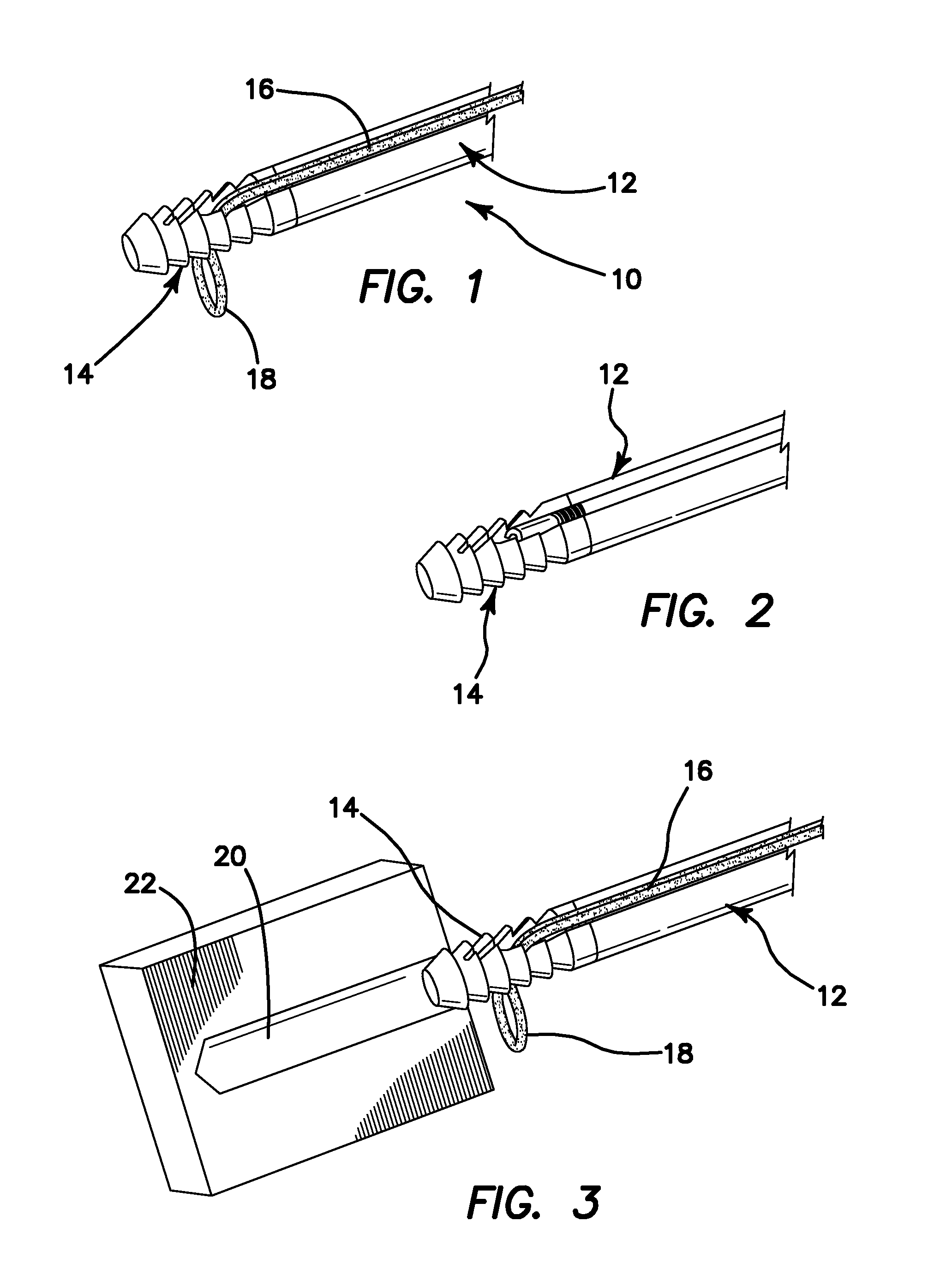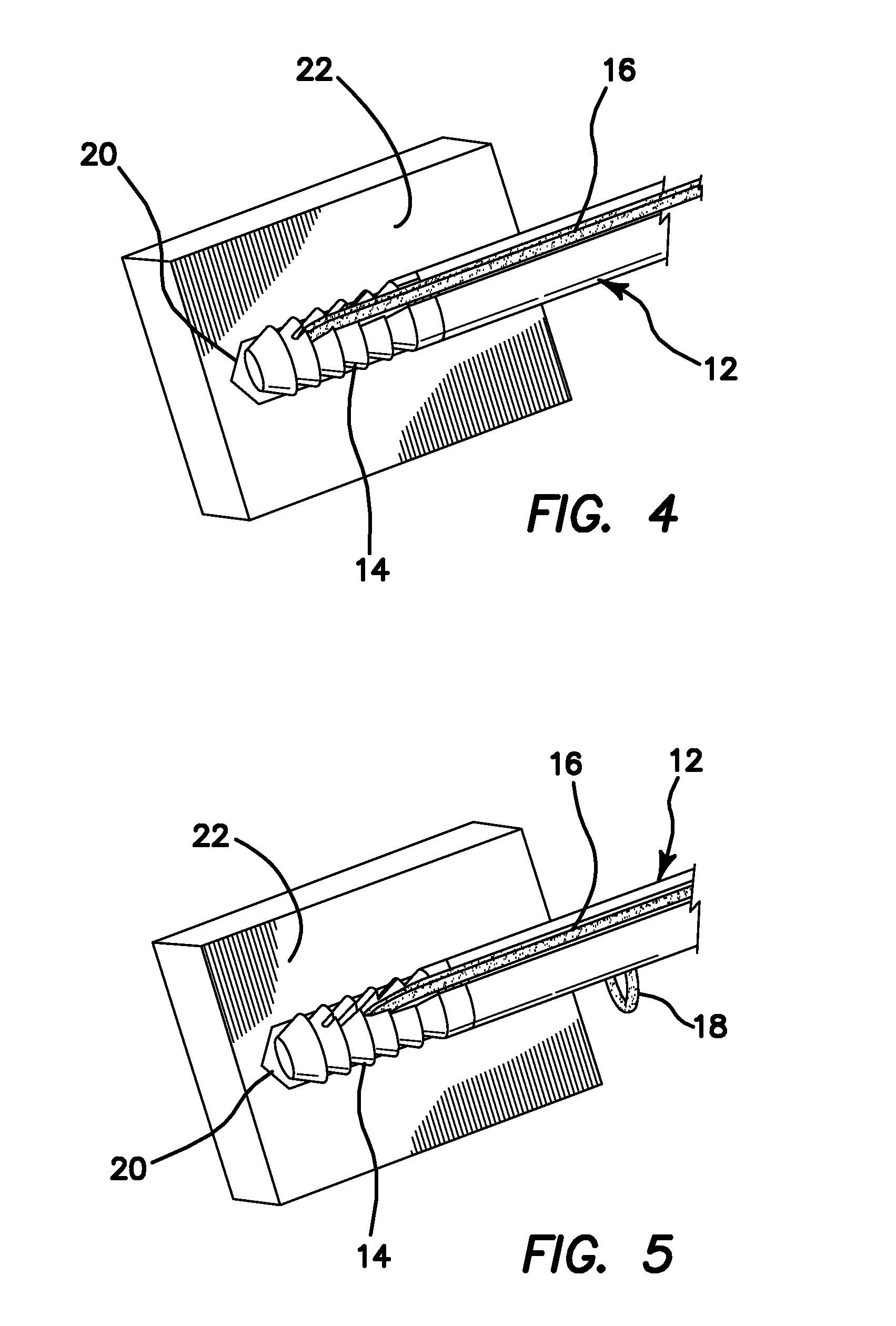Anchors and method for securing suture to bone
a technology of anchors and bone, applied in the field of anchors, can solve the problems of insertion tools, lower chance of breaking anchors, and bone damage, and achieve the effect of reducing the chance of fracture, preventing fracture, and preventing fractur
- Summary
- Abstract
- Description
- Claims
- Application Information
AI Technical Summary
Benefits of technology
Problems solved by technology
Method used
Image
Examples
Embodiment Construction
[0072]Referring now more particularly to the drawings, there is shown in FIGS. 1-5 the distal end of a “suture first” suture to bone implantable anchoring device 10. The device 10 comprises an inserter 12, and an implant 14 loaded on the tip of the inserter 12. Suture 16 is disposed along the inserter 12, as shown in FIG. 1, for example, and through the implant 14, with a loop 18 of suture extending therefrom. This loop 18 is the loop of suture which would extend through the tissue to be approximated to the bone, which is not shown, for clarity. Also not shown in this figure is a suture snare that is used to pull the suture loop 18 into a suture eyelet in the middle of the implant 14, which is illustrated and described below. The snare may comprise a loop of nitinol wire or suture, insert molded into a plastic pull-tab (not shown) which may be mounted on the shaft of the inserter 12. Once the suture strands are placed into the suture snare, the pull-tab is removed from the inserter ...
PUM
 Login to View More
Login to View More Abstract
Description
Claims
Application Information
 Login to View More
Login to View More - R&D
- Intellectual Property
- Life Sciences
- Materials
- Tech Scout
- Unparalleled Data Quality
- Higher Quality Content
- 60% Fewer Hallucinations
Browse by: Latest US Patents, China's latest patents, Technical Efficacy Thesaurus, Application Domain, Technology Topic, Popular Technical Reports.
© 2025 PatSnap. All rights reserved.Legal|Privacy policy|Modern Slavery Act Transparency Statement|Sitemap|About US| Contact US: help@patsnap.com



